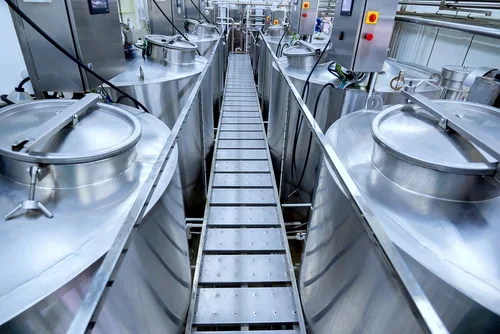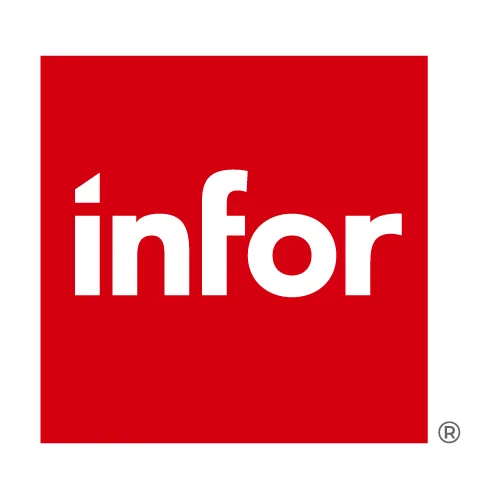All players in the food and beverage (F&B) industry are aware that change is needed to secure a competitive, sustainable and resilient future. Digital innovation is transforming the capabilities of businesses – from incumbents to disruptive start-ups – to resolve industry challenges such as supply chain and inventory visibility, waste reduction, shifting customer demands and product quality, yield and packaging.

With a current value of $3.07bn at present in the F&B market, AI and machine learning (ML) are poised to reach a value of $29.94bn in five years’ time. The drivers are increased operational excellence, quality and compliance, supply chain optimisation, profitable growth, and innovation and transparency. AI technologies can leverage historical learnings and predict future actions for businesses, which in turn improves workplace productivity and drives positive business outcomes. But adopting AI and ML at scale is no longer the biggest barrier to digital transformation in F&B.
“Now that broad technology adoption has matured, the industry challenge has shifted to a people process and vendor technology perspective, to make sure executives haven’t got lost in the technology and terminology,” says Sandeep Anand, Infor’s senior director of applied science, who manages high-performance decision science teams responsible for building scalable AI and ML solutions.
What comes next is empowering teams and tech leaders to understand and select the most suitable use case for the business to maximise ROI.

Make measurable goals of AI application in F&B
Increased compute and storage have expanded the capabilities of these technologies with the onset of generative AI, which can generate complex textual and visual outputs from prompts. With so many options for AI application at hand in F&B, and a current data science talent gap to deploy and scale such systems, having a clear focus on goals rather than tools will help to cement a successful AI transformation.
“Because there is this fear of AI and ML for employees, it’s important to have the right change management process in place so that as you are automating a historically manual process to make things overall more efficient,” says Kevin McCurdy, global partner of consumer goods at Infor’s cloud host, AWS.
“Be focused and precise in what you want to achieve, but think of it in light of the big picture,” adds Anand. “It all ties together in this data-driven decision process. Those gradual, focused steps allow you to have that transformation journey, but it’s the small steps that also allow you to drive that data-driven culture,” he continues.
These steps can be measured closely by tracking key metrics and KPIs to ensure the technology is driving business and to identify pain points as the business looks to solve industry challenges – “without tracking KPIs, executives get lost in an investment in the technology rather than an investment in business,” adds Anand.
Improving product quality and yields
Realising it could make cost savings of $500,000 for every 1% improvement in its yield, the clear use case of AI for leading global dairy provider Amalthea, was to improve cheese quality and yields. Amalthea’s AI-driven yield deviation detection and explanation, a solution implemented in less than 90 days, is now fully automated – from data collection and processing to presentation.
“Infor’s architecture allows you to build curated AI models depending on the set-up and interface with your PLM systems to come up with different recipe options to understand the family of ingredients and change things in batch production, which can also reduce waste,” says Anand. “Less waste means more high-quality goods for the customer. It also means you have more sustainable practices,” he continues.
These models use AI algorithms that can quickly identify defects, including sensor networks, to detect potential risks and patterns that indicate contamination, ensuring only the highest-quality products reach the market. This not only saves time and resources but also maintains a commitment to excellence, contributing to customer satisfaction, trust and loyalty.
Reducing waste and improving efficiency
Similarly, Tyson Foods is leveraging AI and ML, in combination with computer vision via AWS, to provide efficiency within chicken production, predicting which of the 8,000 plastic pins that hold product carriers together on the product lines may become faulty. These are typically manually monitored and would cause downtime within the facility if they are to become faulty – “This is making the lines much more efficient, ensuring they have reliability and the movement of product through the plant,” says McCurdy.
Tyson Foods is also now using computer vision to get near-to-real-time insights into the actual number of chickens on the line. “This gives better visibility on the orders they need to meet and minimises the manual counting and product waste due to underproduction or overproduction in the plant,” he continues.
A more reactive customer service
Consumer demands are constantly shifting, and businesses must adapt if they are to remain a competitive choice, from providing transparency of sustainability in a business’s supply chain to more reactive customer services.
“It’s important to consider how you are catering to your customer, market or product segment and being able to learn and react based on what the customer wants or what you think the market can use from your business,” says Anand.
AI is transforming customer engagement through its ability to collect and organise data, creating recommendations with personalised suggestions and tailored services. By 2026, conversational AI deployments within contact centres that handle omnichannel customer support across industries will reduce labour costs by $80bn, according to Gartner.
“Business can use chatbots to instantly respond to customer inquiries intelligently where a human may not be there,” says McCurdy. “They can also leverage algorithms to then create personalised messages and services to the consumers.”
Optimising supply chains
Another critical challenge in F&B is managing suppliers, distributors and retailers. AI is stepping in to streamline supply chain operations and improve visibility along the whole process. A recent McKinsey report has revealed that autonomous supply chain planning can lead to an increase in revenue of up to 4%, a reduction in inventory of up to 20%, and a decrease in supply chain costs of up to 10%. Algorithms can analyse large amounts of data to help predict demand fluctuations, optimise inventory levels and reduce waste.
Even with cost and price pressures, a 2022 survey by IDC highlighted that sustainability was the priority for 40% of F&B organisations. While there is a balancing act between quality and price, F&B can utilise AI systems that have new capabilities to optimise resource usage and reduce environmental impacts. AI-powered analytics help businesses identify energy-saving opportunities, minimise packaging waste and improve overall operational efficiency.
By addressing key challenges such as supply chain optimisation, quality control, customer demands, sustainability and food safety, AI is reshaping the way F&B manufacturers operate and cater to consumer needs. Adapting to the landscape with this technology enables companies to stay agile and competitive in a rapidly changing landscape.


